Creating a zen room transforms your living space into a sanctuary of peace and tranquility. These thoughtfully designed retreats emphasize simplicity, natural elements, and mindful living to reduce stress and promote mental well-being. Drawing inspiration from Japanese design principles, zen rooms prioritize minimalism, organic materials, and harmonious balance. Whether you're seeking a dedicated meditation space or simply want to infuse calm energy into your home, these twenty zen room ideas offer practical solutions for every lifestyle and budget. From bamboo accents to water features, each concept focuses on creating an environment that nurtures both mind and spirit while maintaining the essential zen philosophy of "less is more."
1. Minimalist Zen Room with Natural Wood Elements
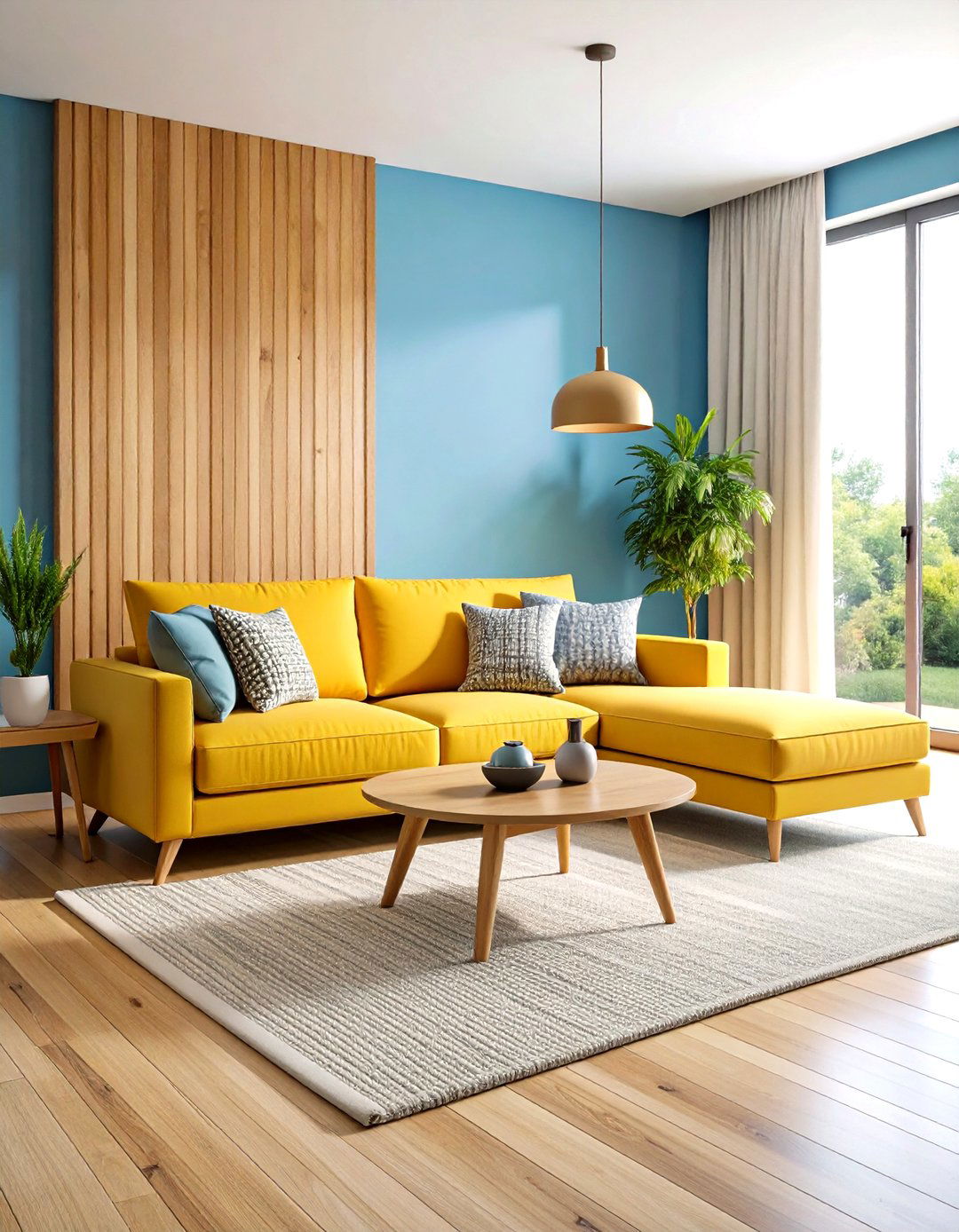
The foundation of any effective zen room begins with embracing natural wood elements that create warmth and grounding energy. Select furniture pieces crafted from untreated cedar, bamboo, or teak, allowing the natural grain patterns to serve as subtle decorative features. A low wooden platform bed paired with a simple meditation bench establishes the room's peaceful focal point. Avoid painted or stained finishes, instead celebrating the authentic beauty of raw timber. Incorporate wooden storage solutions like built-in shelving or Japanese tansu chests to maintain organization while preserving the minimalist aesthetic. Natural wood naturally complements other organic materials and creates a cohesive foundation for additional zen elements throughout your space.
2. Zen Room Meditation Corner with Floor Seating
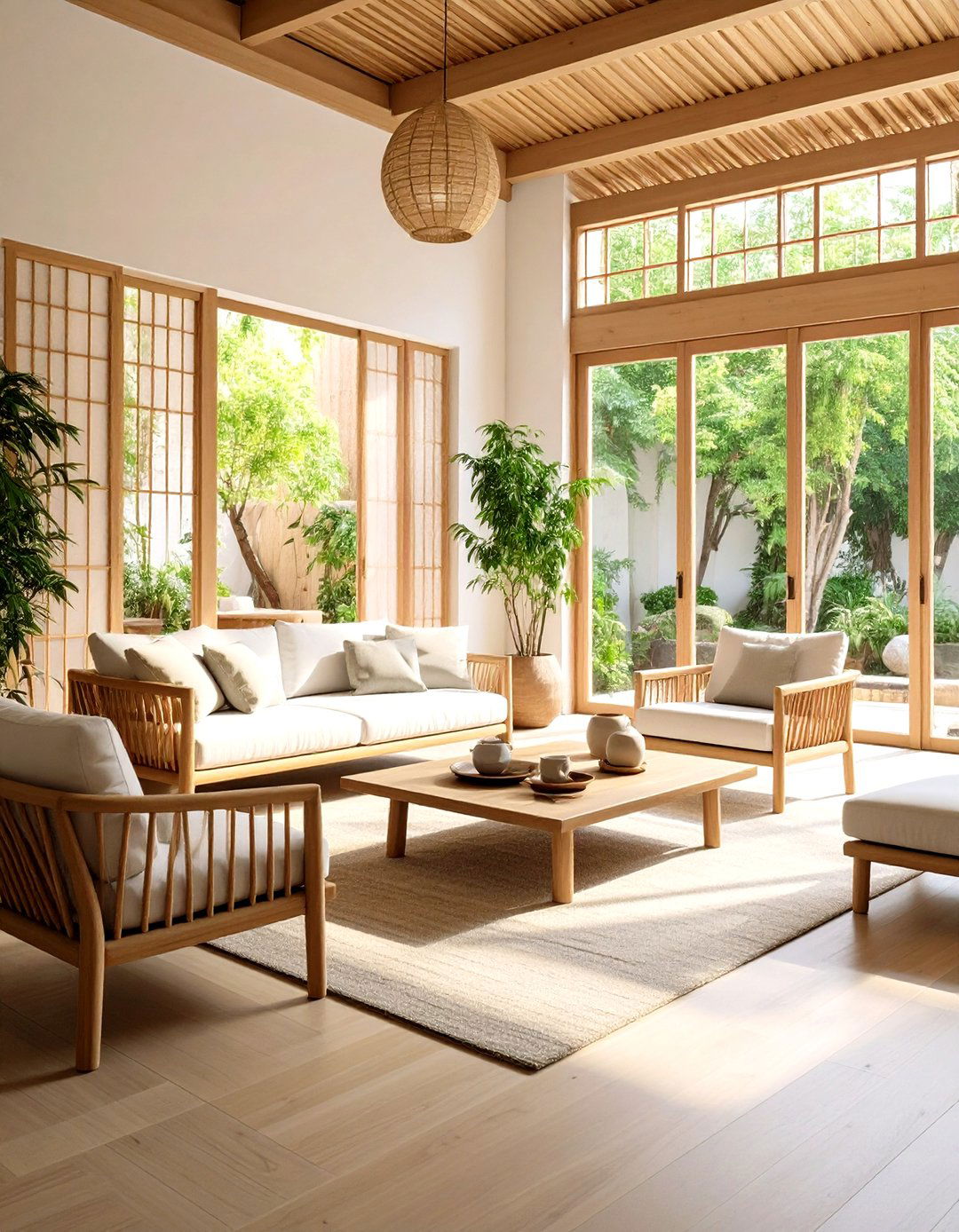
Creating a dedicated meditation corner within your zen room provides an intimate space for daily mindfulness practice. Position thick meditation cushions or a traditional zafu on a soft yoga mat, establishing a comfortable foundation for extended sitting periods. Arrange the seating to face a simple focal point such as a single candle, small Buddha statue, or inspiring piece of calligraphy. Layer natural fiber rugs underneath to define the meditation zone and add textural warmth to hard flooring surfaces. Keep this area completely free from distractions, electronics, and unnecessary decorative items. The proximity to the floor encourages grounding and connection to earth energy, while the designated space creates ritual significance that enhances your meditation experience.
3. Zen Room with Bamboo Water Feature
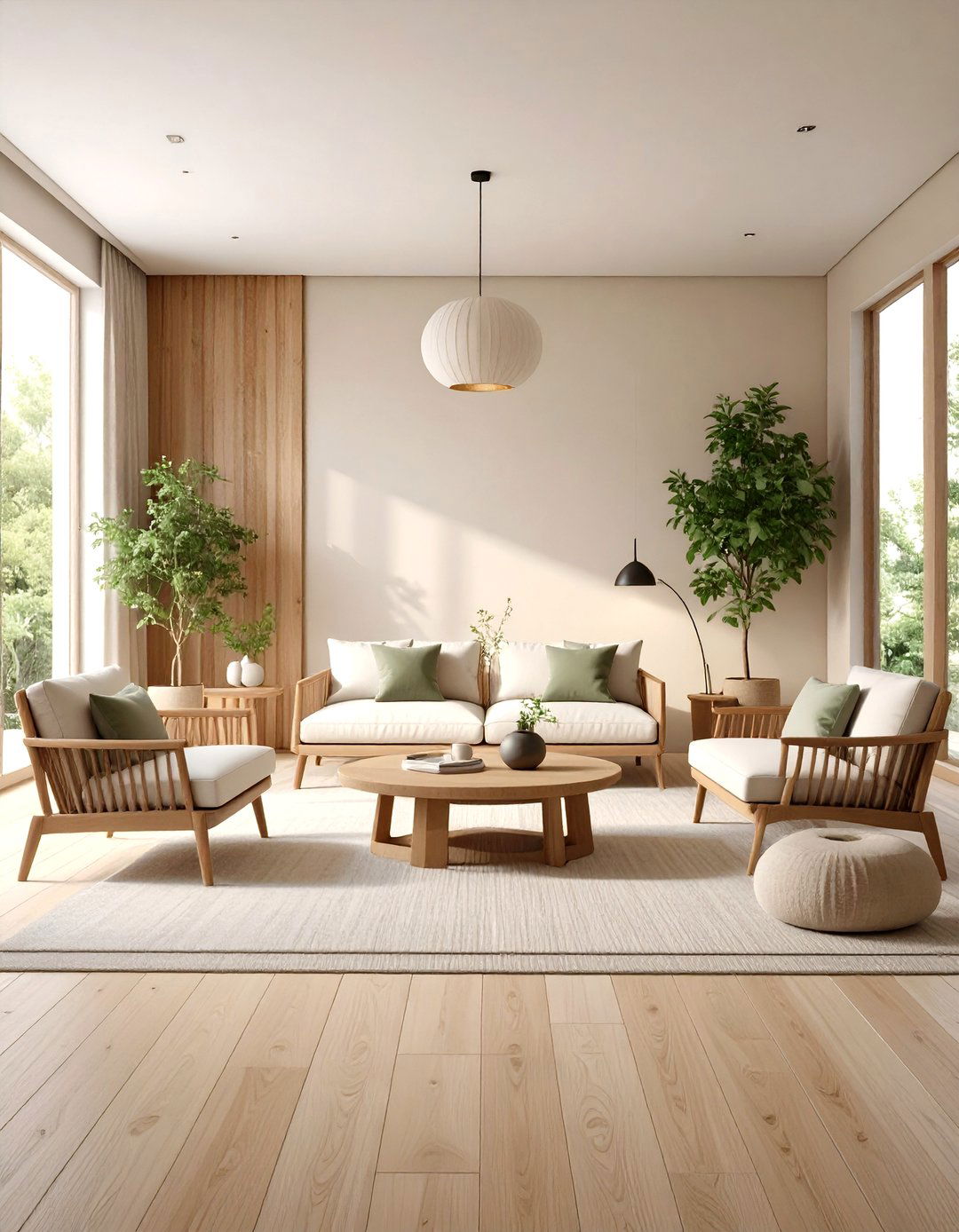
Incorporating a bamboo water feature brings the soothing sounds of nature directly into your zen room environment. A small tabletop fountain with bamboo spouts creates gentle trickling sounds that mask external noise while promoting relaxation. Position the water feature strategically where its sounds can be heard throughout the room without becoming overwhelming. Choose designs that incorporate natural stone bases with bamboo elements, maintaining harmony with other organic materials in your space. The flowing water adds movement and life energy while serving as a focal point for contemplation. Regular maintenance keeps the water clean and the sounds crisp, ensuring your zen room maintains its peaceful ambiance. This natural element perfectly embodies the zen principle of finding beauty in simplicity.
4. Zen Room with Natural Lighting Design
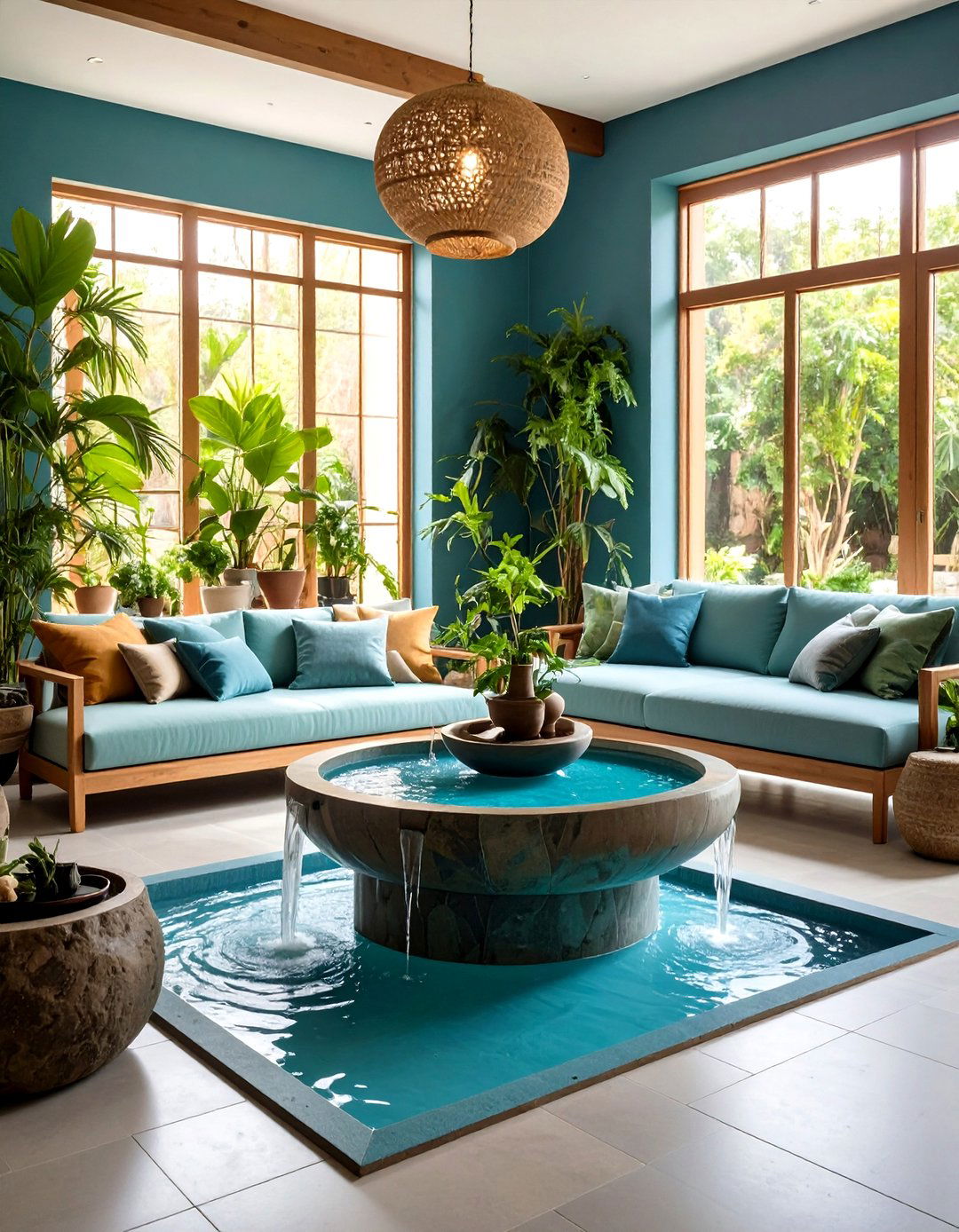
Mastering natural lighting transforms your zen room into a serene sanctuary that changes gracefully throughout the day. Install sheer bamboo curtains or rice paper screens to diffuse harsh sunlight while maintaining connection to the outdoors. Position mirrors strategically to reflect and amplify existing natural light without creating glare or visual chaos. Choose window treatments that can be easily adjusted to control light intensity during different activities like meditation or reading. Maximize morning and evening light by arranging seating areas to capture gentle sunshine during these peaceful times. Supplement natural light with warm-toned LED bulbs that mimic sunlight's natural progression. This thoughtful approach to illumination creates an ever-changing yet consistently calming atmosphere that supports your zen room's tranquil purpose.
5. Zen Room with Stone Garden Elements
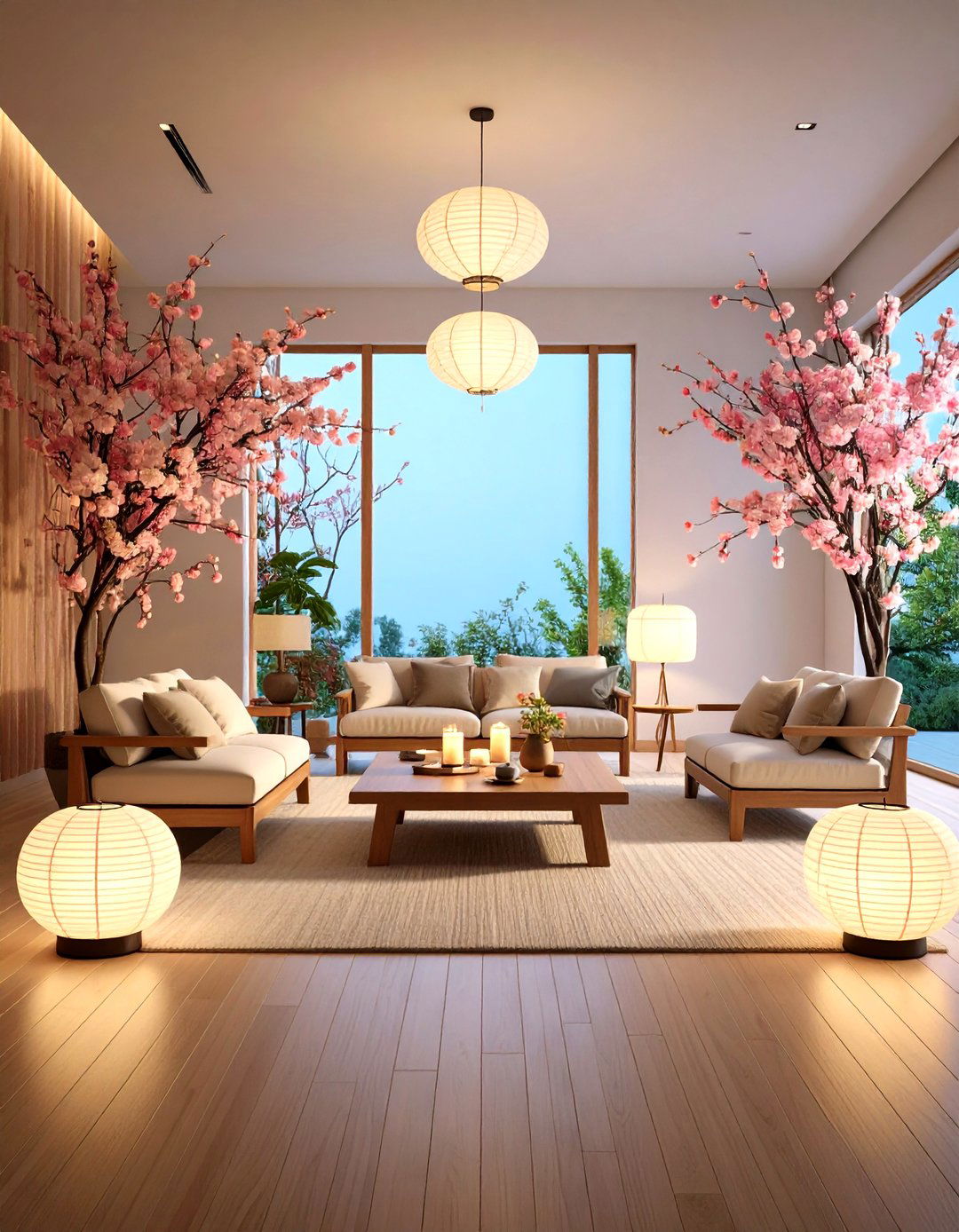
Integrating stone garden elements brings grounding earth energy and timeless beauty to your zen room design. Arrange smooth river rocks in wooden bowls or shallow ceramic trays to create miniature landscape displays that invite contemplation. Use larger stones as natural sculptures or meditation focal points, selecting pieces with interesting textures and organic shapes. Incorporate a small sand tray with carefully placed stones, allowing you to rake patterns as a meditative practice. Choose stones in neutral tones that complement your room's color palette while adding textural contrast to softer elements. These geological treasures connect your indoor space with nature's permanence and stability, creating visual anchors that promote mindfulness and inner peace throughout your zen room sanctuary.
6. Zen Room with Indoor Plant Sanctuary
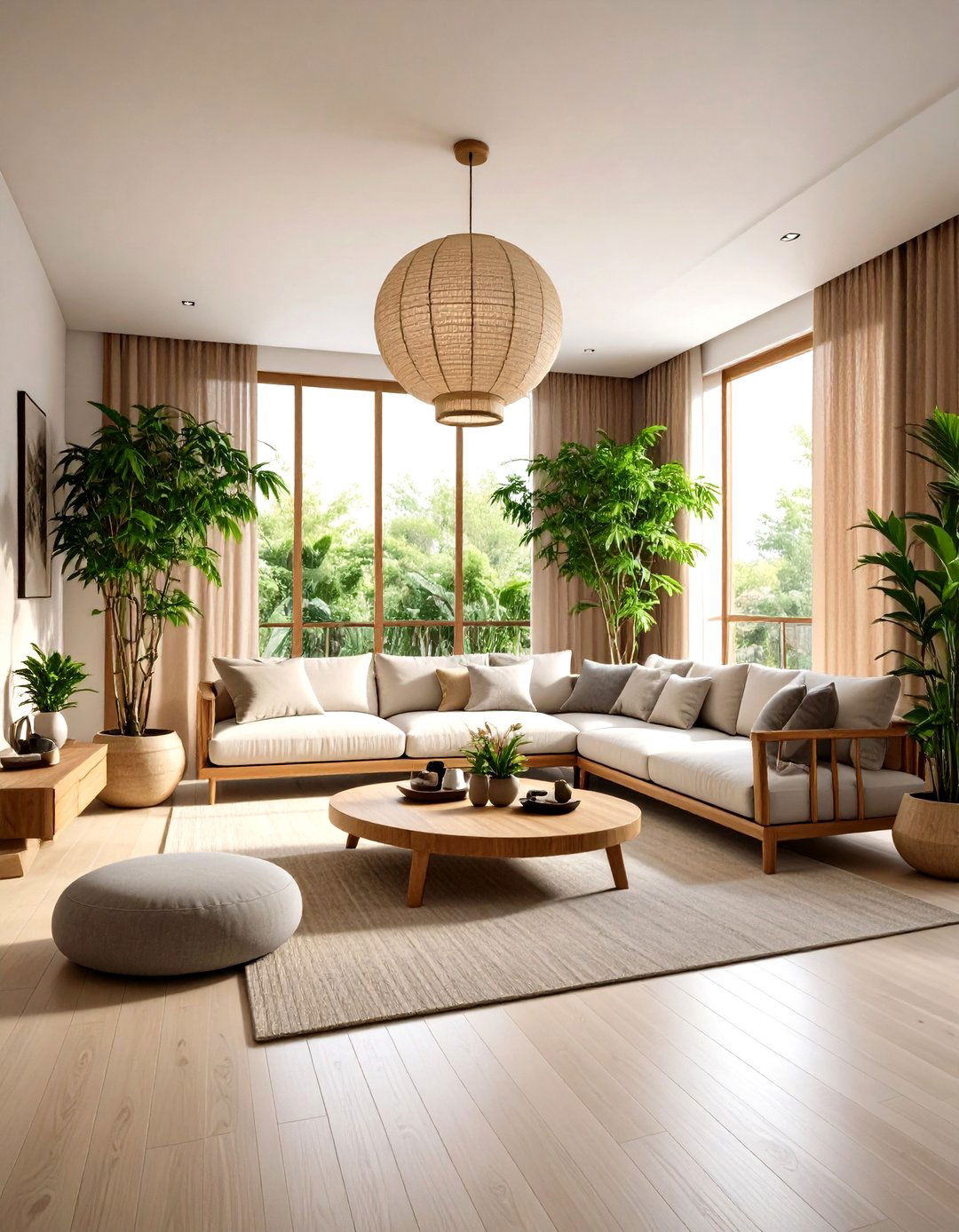
Transforming your zen room into an indoor plant sanctuary purifies the air while creating a living, breathing environment that nurtures well-being. Select low-maintenance plants like peace lilies, snake plants, or bamboo palms that thrive in various lighting conditions without requiring intensive care. Arrange plants at different heights using wooden plant stands or hanging planters to create natural layers and visual depth. Choose ceramic or stone planters in neutral tones that complement your zen aesthetic while allowing plants to serve as living art pieces. Include air-purifying varieties that naturally improve indoor air quality, supporting both physical and mental health. The presence of greenery introduces life energy and natural color variations that enhance your zen room's connection to nature.
7. Zen Room with Japanese Tea Ceremony Space
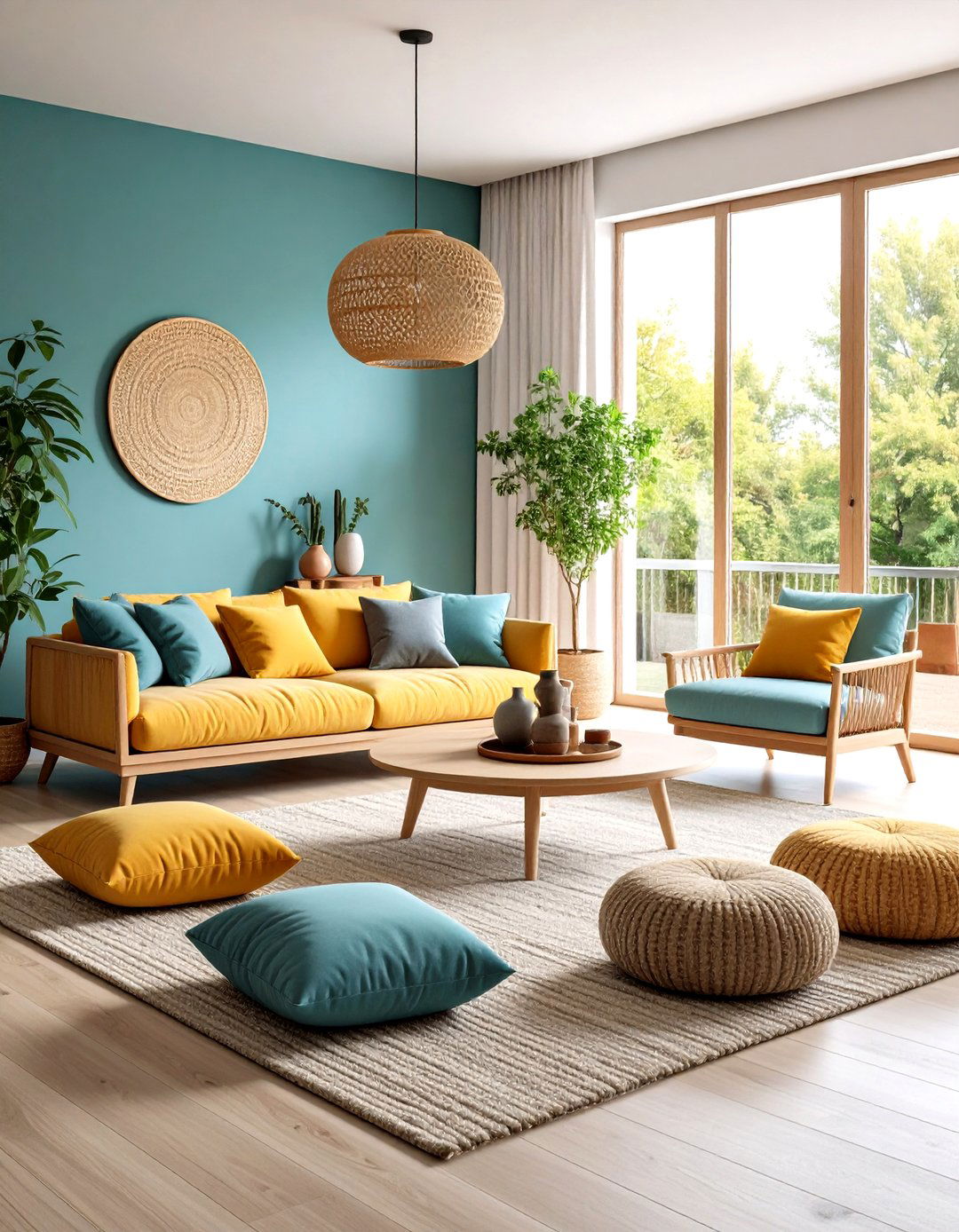
Creating a Japanese tea ceremony space within your zen room establishes a dedicated area for mindful ritual and contemplation. Install traditional tatami mats to define the tea area and provide authentic flooring that encourages floor-level sitting. Include a low wooden tea table with clean lines and simple proportions, paired with meditation cushions for comfortable seating during tea preparation. Display essential tea ceremony items like a bamboo whisk, ceramic tea bowls, and a simple tea canister in a designated alcove or low shelf. Choose a hanging scroll with calligraphy or nature imagery to create a focal point above the tea area. This sacred space encourages slow, intentional movements and mindful presence while honoring the Japanese tradition of finding enlightenment through simple daily rituals.
8. Zen Room with Neutral Color Palette
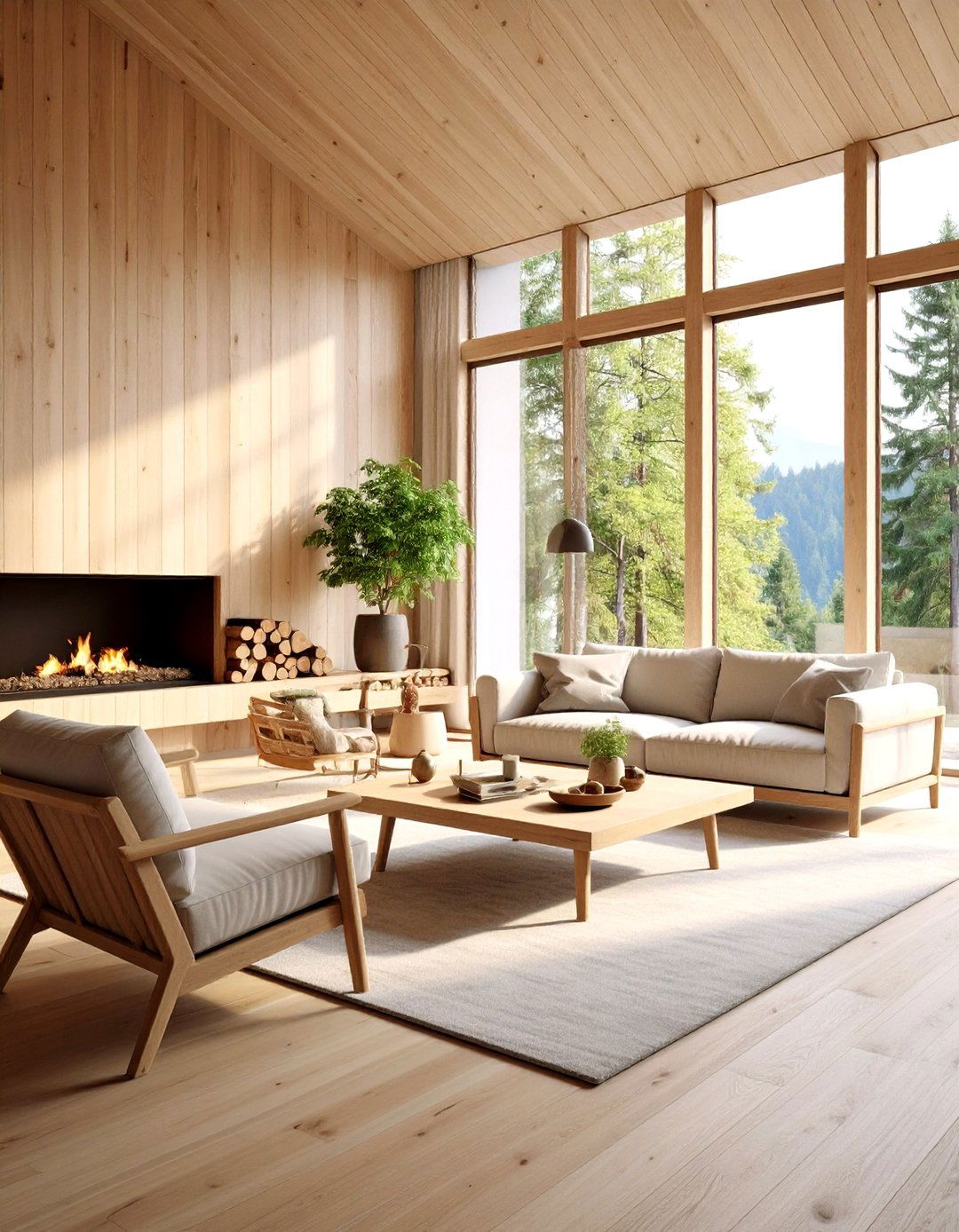
Designing your zen room with a carefully curated neutral color palette creates a calming foundation that promotes mental clarity and relaxation. Paint walls in soft whites, warm beiges, or gentle grays that reflect light and create an expansive feeling within your space. Layer different neutral tones through textiles, furniture, and decorative elements to add depth without visual complexity. Include natural earth tones like sage green or soft taupe through accent pieces that connect your interior with nature's palette. Avoid bright or contrasting colors that can create visual tension and disturb the peaceful atmosphere. This monochromatic approach allows textures and natural materials to become the primary sources of visual interest while maintaining the serene simplicity essential to zen room design.
9. Zen Room with Organic Textiles and Fabrics
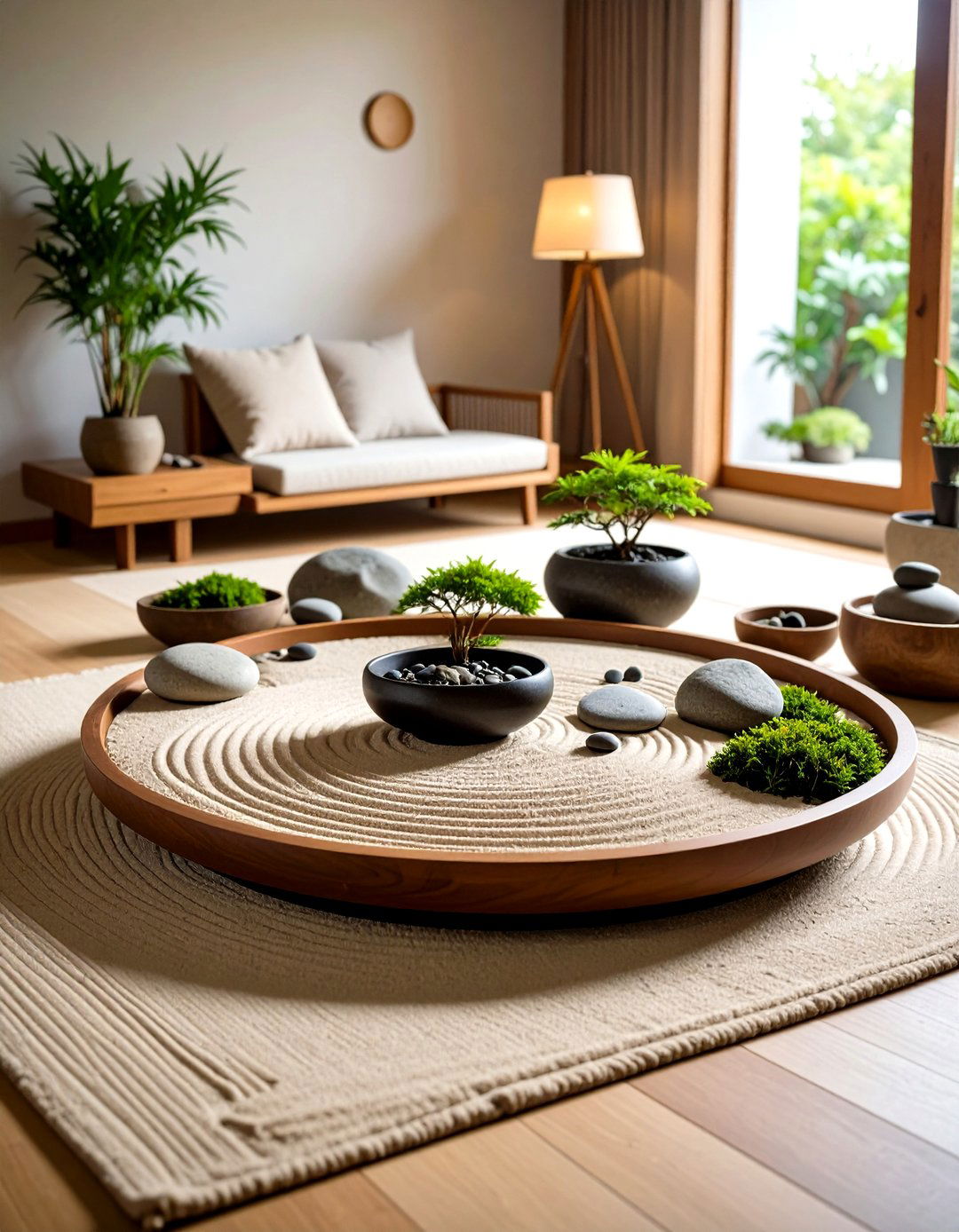
Incorporating organic textiles and fabrics into your zen room adds comfort and warmth while maintaining connection to natural materials. Choose bedding, cushions, and throws made from organic cotton, linen, or hemp that feel soft against the skin while supporting sustainable practices. Layer different textures through natural fiber rugs, woven wall hangings, and fabric cushions that invite touch and create sensory richness. Select neutral colors and simple patterns that complement rather than compete with your room's peaceful aesthetic. Include bamboo fiber textiles that offer natural antimicrobial properties and temperature regulation for enhanced comfort. These organic materials age beautifully and develop character over time, embodying the zen principle of finding beauty in natural imperfection while creating a cozy, nurturing environment.
10. Zen Room with Low-Profile Wooden Furniture
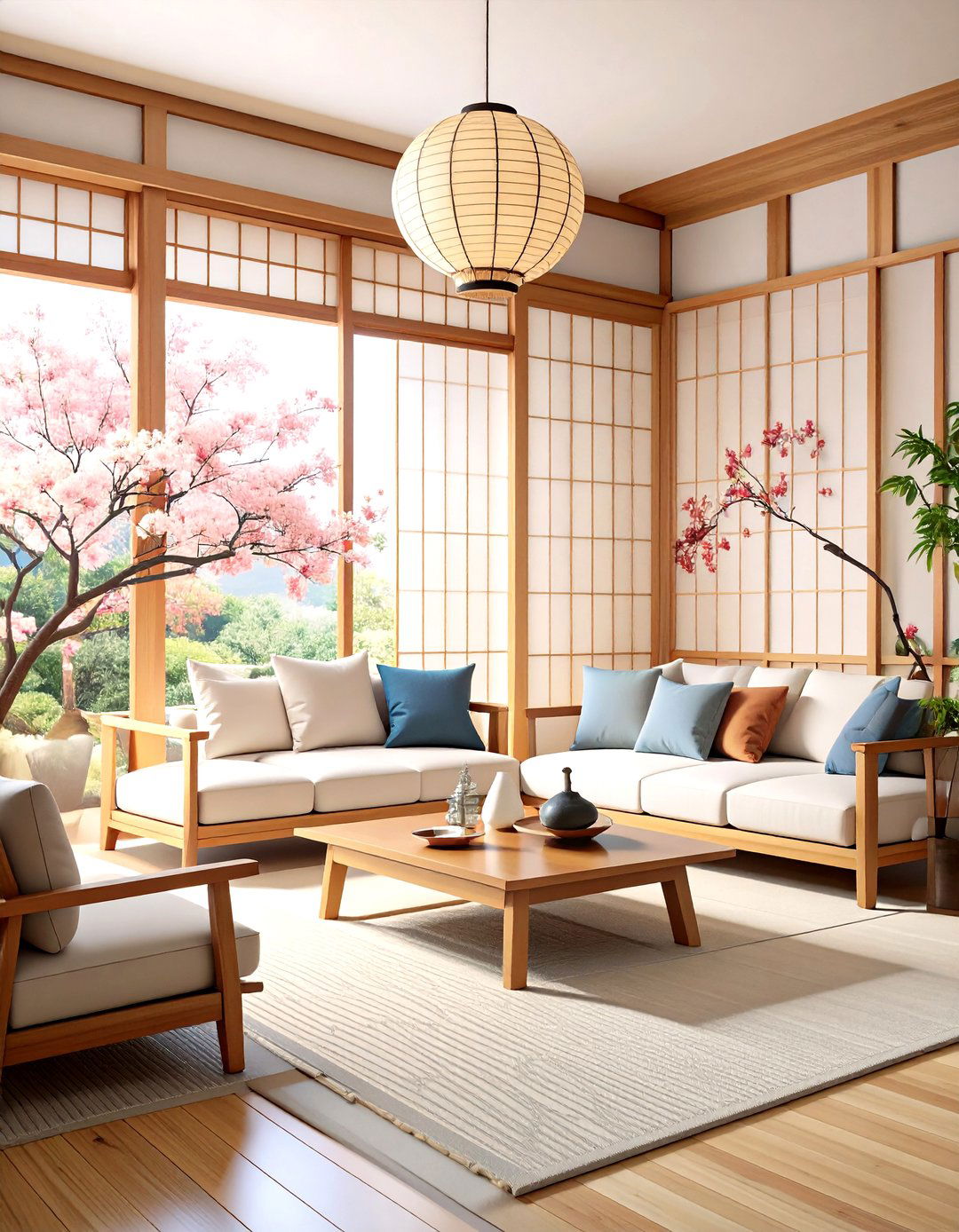
Choosing low-profile wooden furniture creates an authentic zen room atmosphere that emphasizes connection to the earth and spatial harmony. Select platform beds, floor tables, and meditation benches that sit close to the ground, encouraging a humble and grounded perspective. Opt for furniture with clean lines and minimal ornamentation, allowing the natural wood grain to provide visual interest without overwhelming the space. Include built-in storage solutions that maintain the room's uncluttered appearance while serving practical organizational needs. Choose sustainable wood sources like bamboo or reclaimed timber that align with zen principles of environmental consciousness. This furniture approach creates better flow throughout your zen room while promoting the traditional Japanese aesthetic of finding profound beauty in elegant simplicity.
11. Zen Room with Essential Oil Aromatherapy
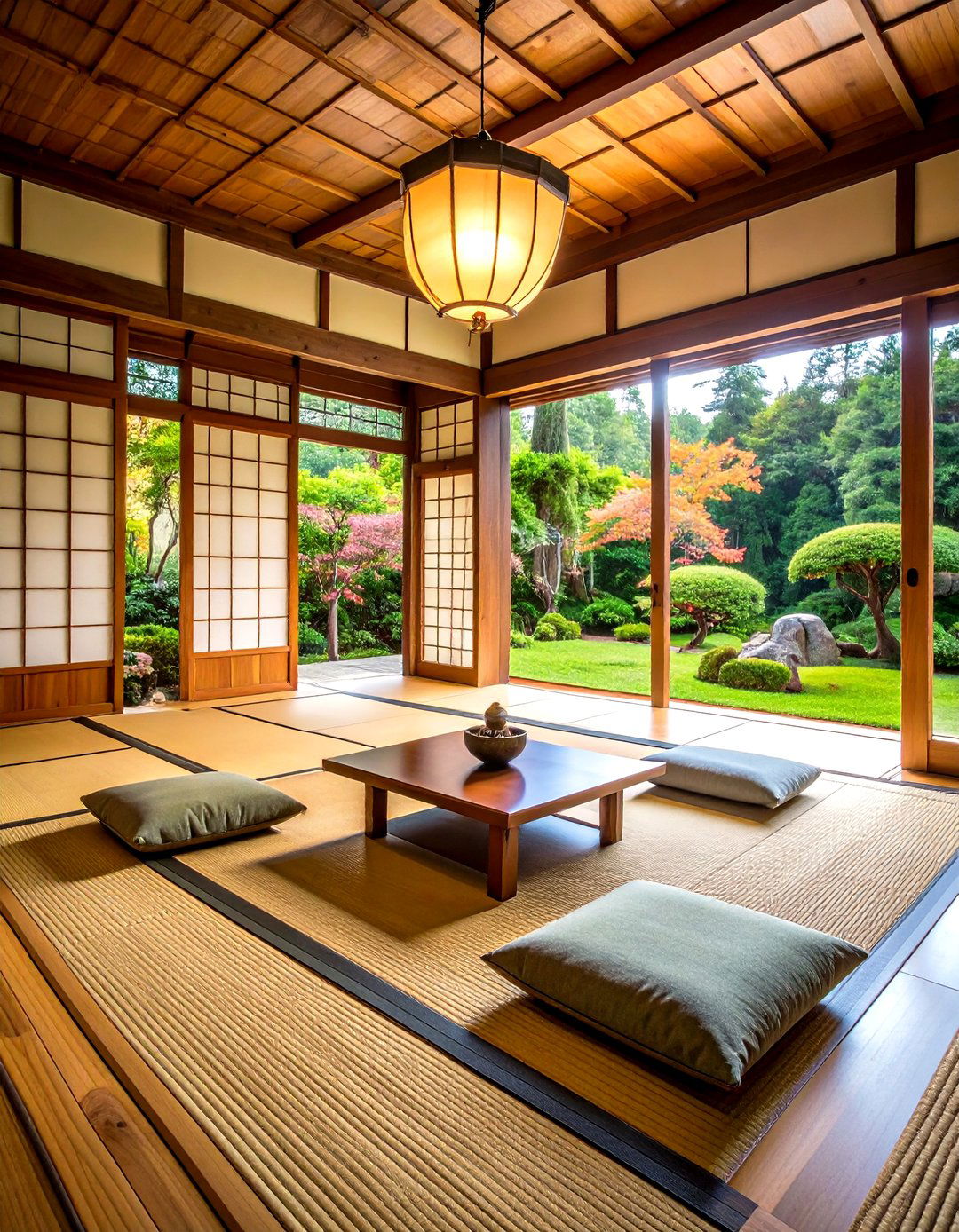
Integrating essential oil aromatherapy into your zen room engages the sense of smell to deepen relaxation and enhance mindfulness practices. Install a quiet ultrasonic diffuser that disperses calming scents like lavender, sandalwood, or eucalyptus without creating noise or visual distraction. Choose pure, high-quality essential oils that support different activities—energizing citrus for morning meditation or grounding cedarwood for evening wind-down routines. Place the diffuser in a central location where aromas can circulate naturally throughout your zen room space. Include small dishes of dried herbs or potpourri made from natural ingredients as additional scent sources. This sensory element creates an immediate shift in atmosphere upon entering your zen room, signaling to your mind and body that it's time for relaxation and inner reflection.
12. Zen Room with Soft Ambient Lighting

Creating soft ambient lighting in your zen room establishes the perfect atmosphere for relaxation and contemplation throughout different times of day. Install dimmer switches on all artificial lights to customize brightness levels for various activities like meditation, reading, or gentle stretching. Use warm-toned LED bulbs that mimic candlelight's soothing glow without the safety concerns of open flames. Include table lamps with rice paper shades or bamboo fixtures that cast gentle, diffused light patterns on walls and surfaces. Position floor lamps in corners to create indirect lighting that eliminates harsh shadows while maintaining visual comfort. Consider salt lamps for their warm amber glow and potential air-purifying properties, adding both functional and decorative elements to your zen room sanctuary.
13. Zen Room with Clutter-Free Organization
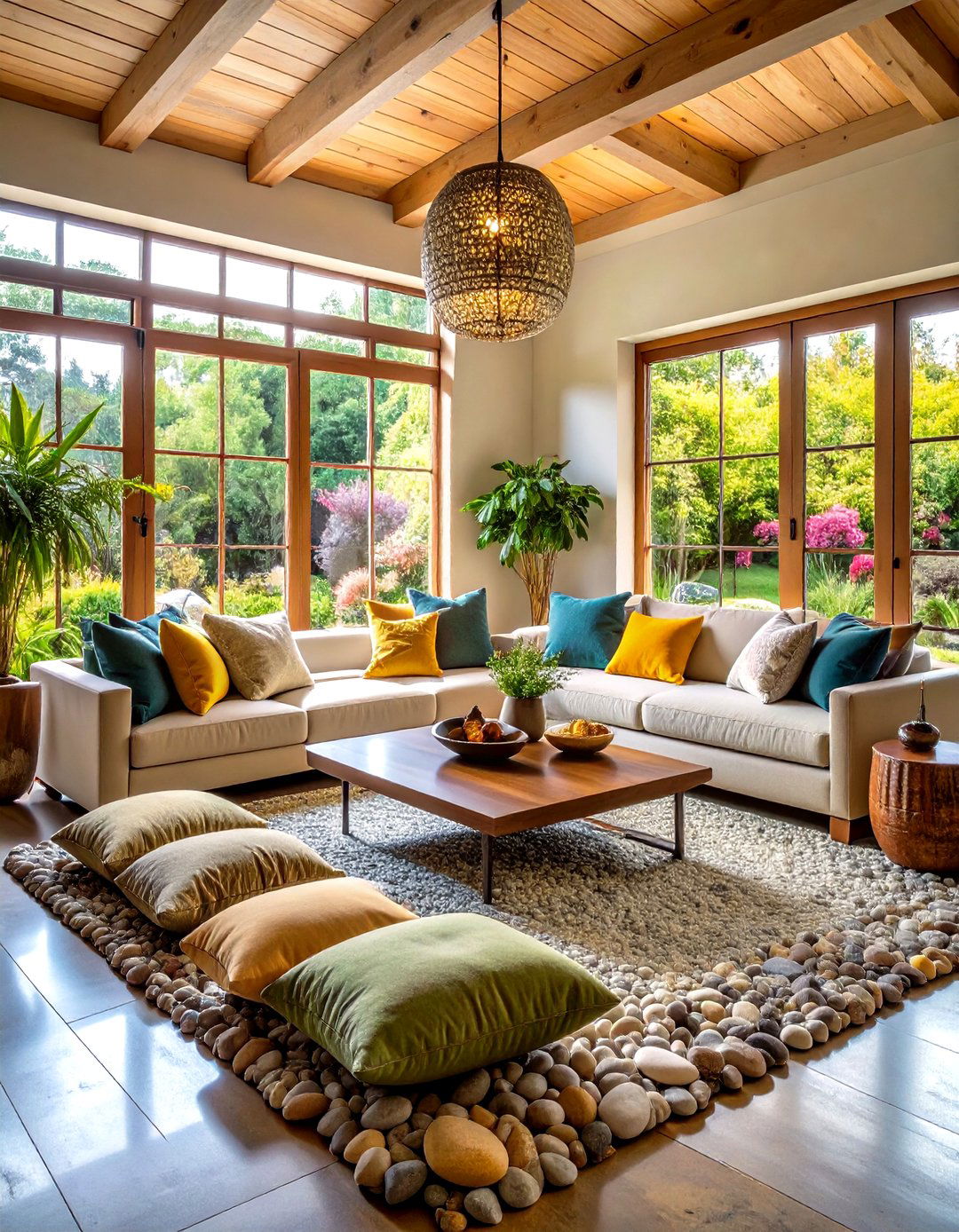
Maintaining clutter-free organization in your zen room requires thoughtful storage solutions that preserve the peaceful, minimalist aesthetic while keeping essentials accessible. Install hidden storage compartments beneath platform beds or window seats that conceal items without disrupting visual harmony. Use natural woven baskets or wooden boxes to organize meditation supplies, books, and personal items in designated areas. Apply the principle of "a place for everything" by assigning specific locations for each item and returning things immediately after use. Include only items that serve a specific purpose or bring genuine joy, regularly evaluating possessions to prevent accumulation. This organizational approach creates mental clarity and reduces visual distractions, allowing your zen room to fulfill its purpose as a peaceful retreat from life's complexities.
14. Zen Room with Japanese Shoji Screen Dividers
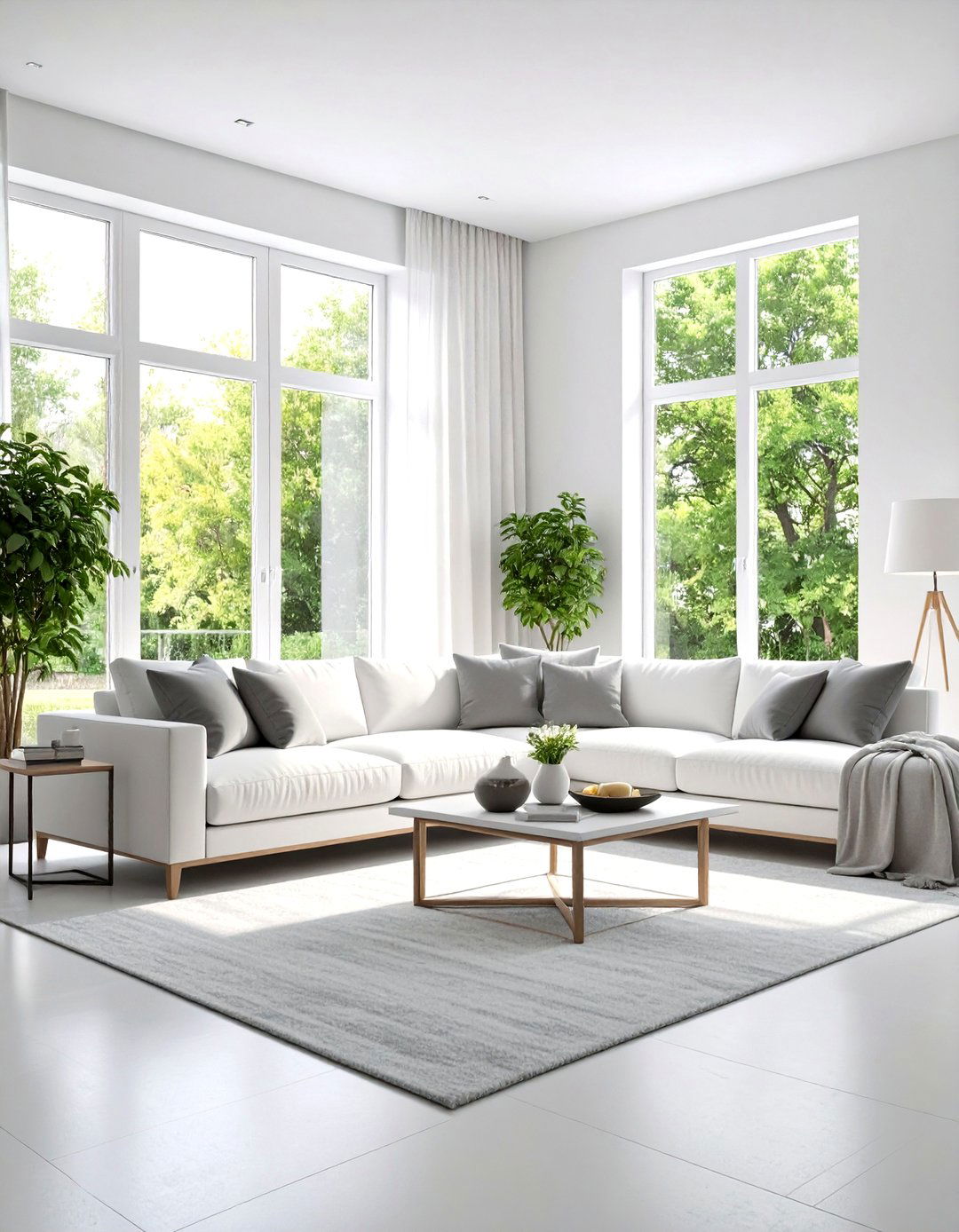
Installing Japanese shoji screen dividers in your zen room creates flexible space definition while maintaining the open, flowing atmosphere essential to zen design. These translucent panels made from wooden frames and rice paper allow light to filter gently between spaces while providing privacy when needed. Use shoji screens to separate sleeping areas from meditation zones or to create intimate alcoves within larger rooms. Choose traditional geometric patterns or simple clean lines that complement your existing decor without adding visual complexity. The screens can be easily moved or folded away when you want to open up the entire space for yoga practice or gatherings. This versatile element embodies the zen principle of adaptability while adding authentic Japanese architectural details that enhance your room's cultural authenticity and serene atmosphere.
15. Zen Room with Natural Sand Garden Features
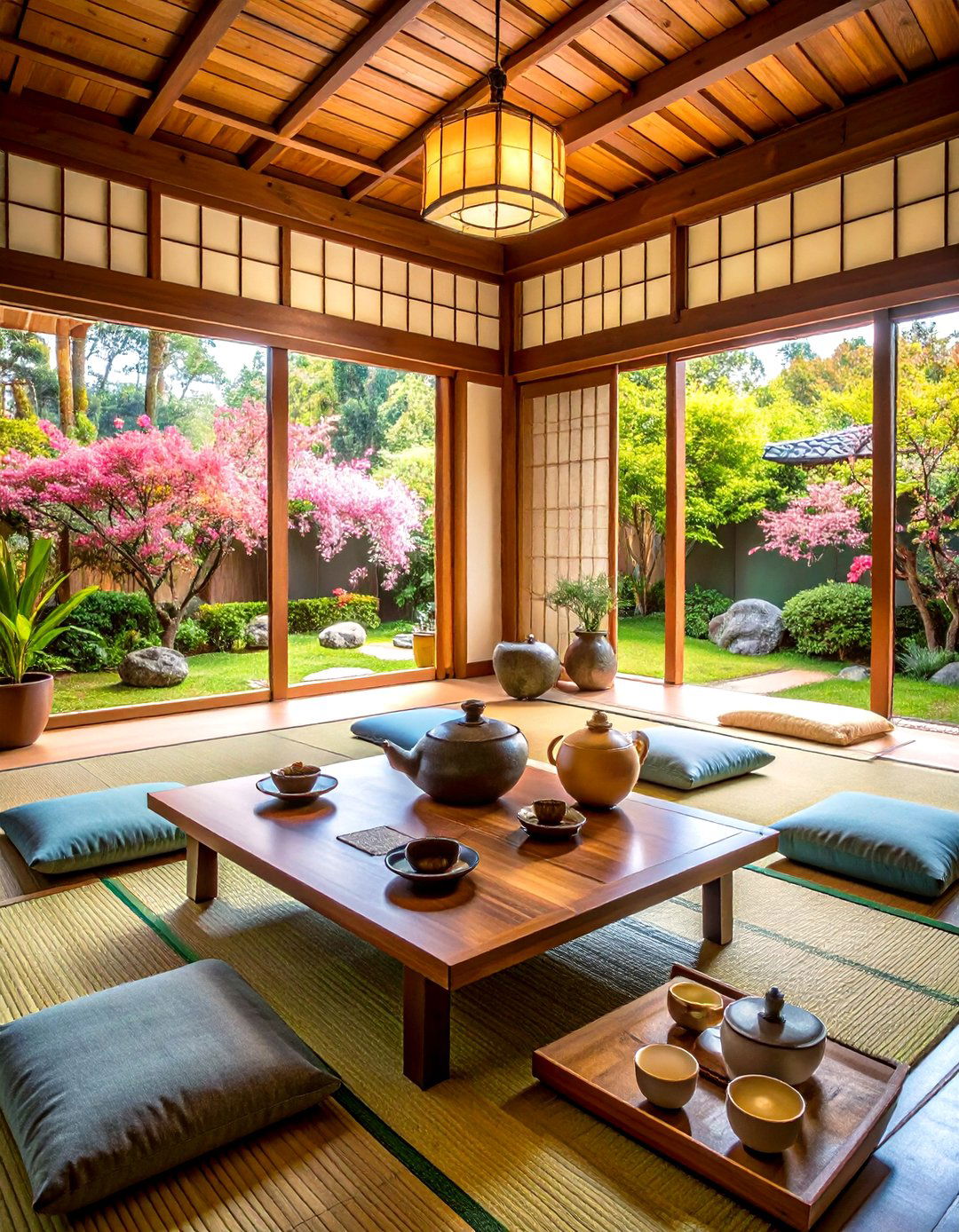
Creating natural sand garden features within your zen room brings the meditative qualities of traditional Japanese rock gardens into your indoor sanctuary. Install a shallow wooden tray filled with fine sand and smooth stones, positioned where you can access it easily for contemplative raking. Use different colored sands to create subtle variations and depth within your miniature landscape design. Include small tools like wooden rakes or combs specifically designed for creating patterns and maintaining your indoor garden. Position this feature where natural light can highlight the textural details and shadows created by your designs. The repetitive action of raking sand serves as active meditation, helping to clear mental clutter while creating beautiful, temporary art that embodies the zen teaching about impermanence and letting go.
16. Zen Room with Tech-Free Digital Detox Zone
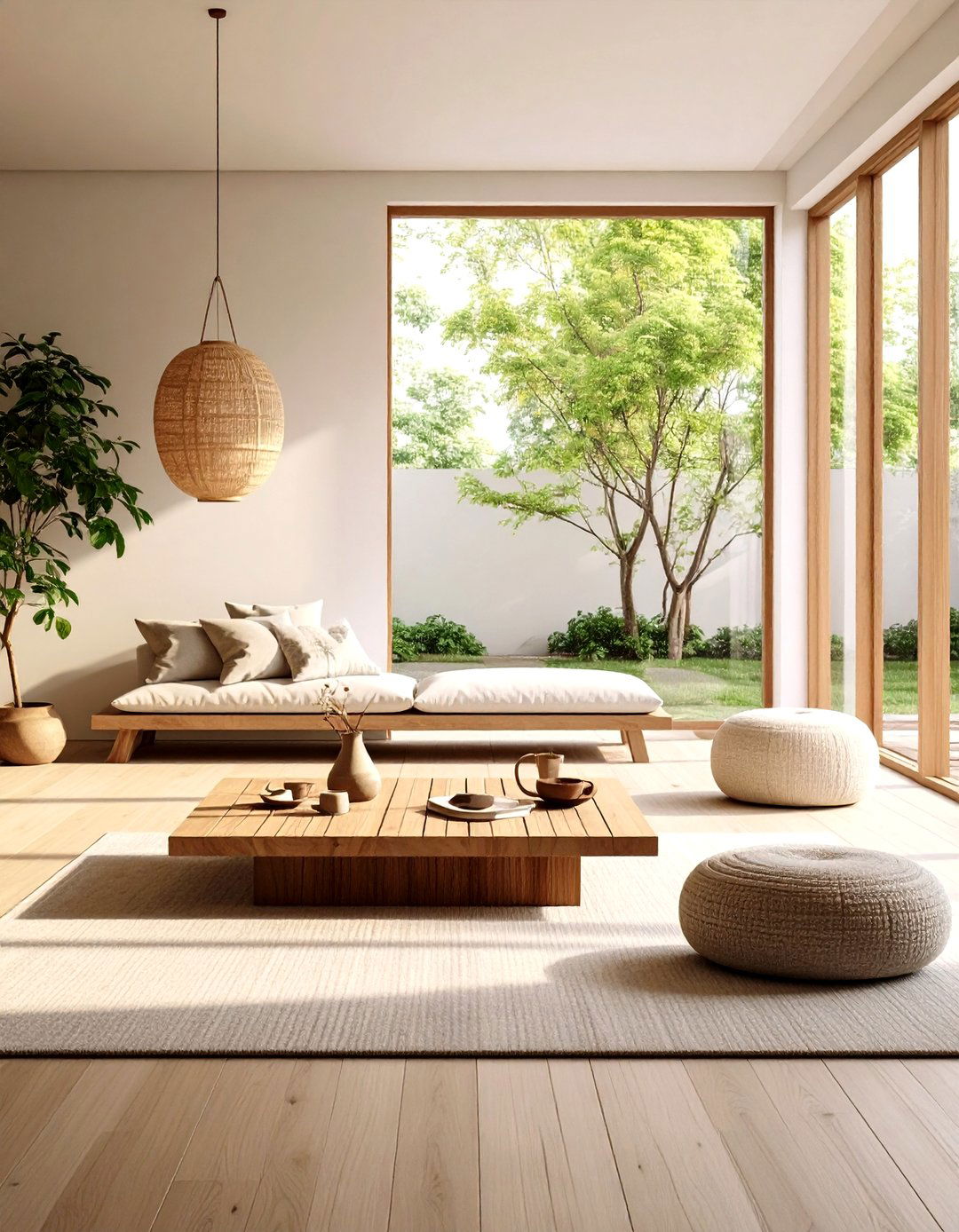
Establishing a tech-free digital detox zone within your zen room creates essential boundaries between modern connectivity and mindful presence. Remove all electronic devices including televisions, computers, and charging stations from this sacred space dedicated to inner reflection. Replace digital clocks with simple analog timepieces or natural indicators like sunlight and shadows to maintain awareness without electronic dependence. Include alternatives to digital entertainment such as inspiring books, journals for reflection, or simple puzzles that engage the mind without overstimulation. Use natural materials like wooden boxes or fabric pouches to store any devices that must enter the space temporarily. This intentional disconnection allows your nervous system to truly relax while creating space for genuine self-reflection and present-moment awareness.
17. Zen Room with Circular Design Elements
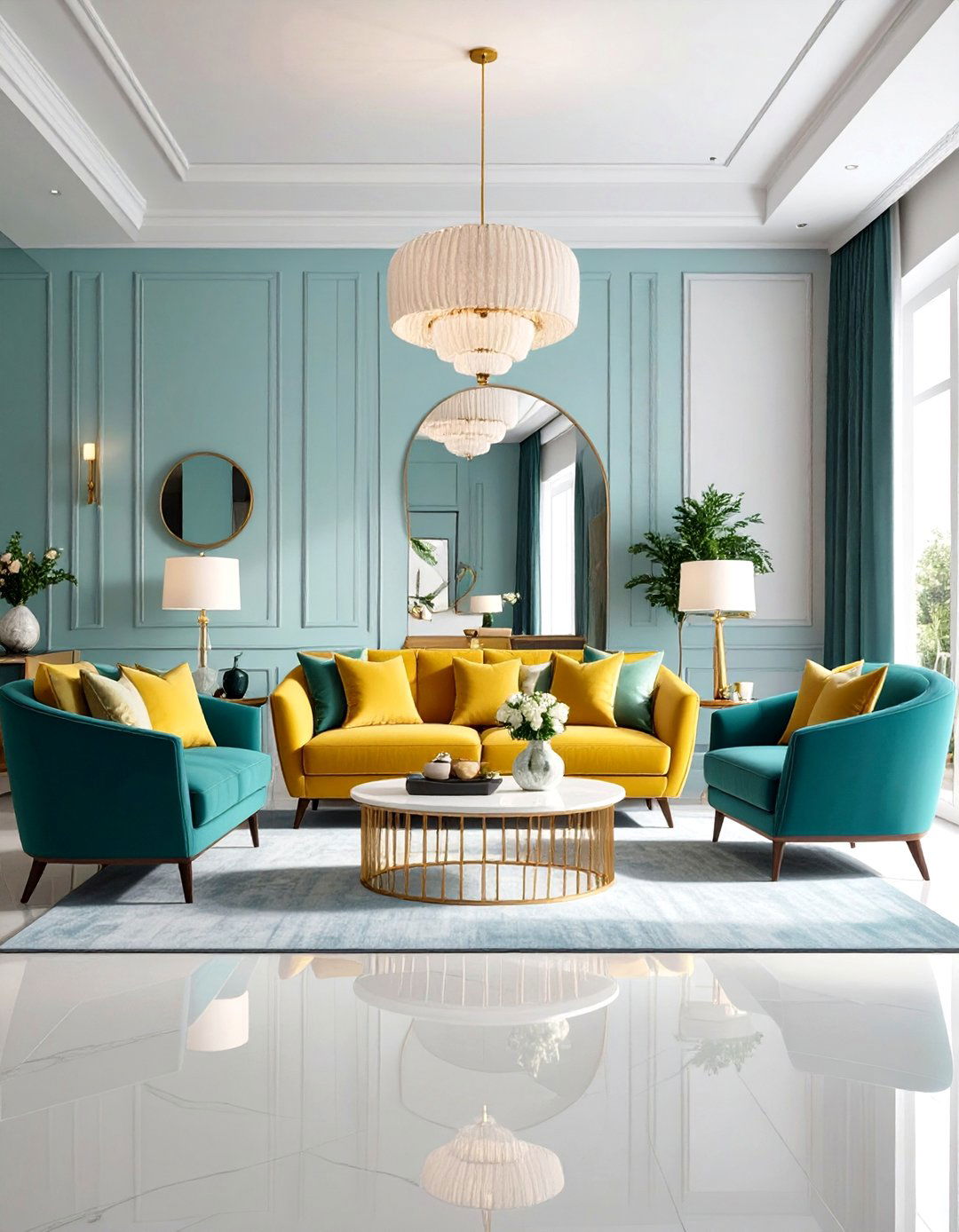
Incorporating circular design elements into your zen room promotes energy flow and creates visual harmony that supports peaceful contemplation. Choose round meditation cushions, circular rugs, or spherical light fixtures that soften the angular lines often found in modern architecture. Include curved furniture pieces like rounded seating areas or arched doorways that invite movement and create gentle transitions between spaces. Display circular artwork, mirrors, or decorative elements that draw the eye in smooth, continuous motions rather than creating visual stopping points. Use circular arrangements when placing plants, stones, or other decorative objects to maintain this flowing aesthetic throughout your zen room. These curved elements represent completeness and unity in zen philosophy while creating a more organic, nurturing environment that feels distinctly different from the sharp angles and straight lines of everyday spaces.
18. Zen Room with Mindful Wall Art Display
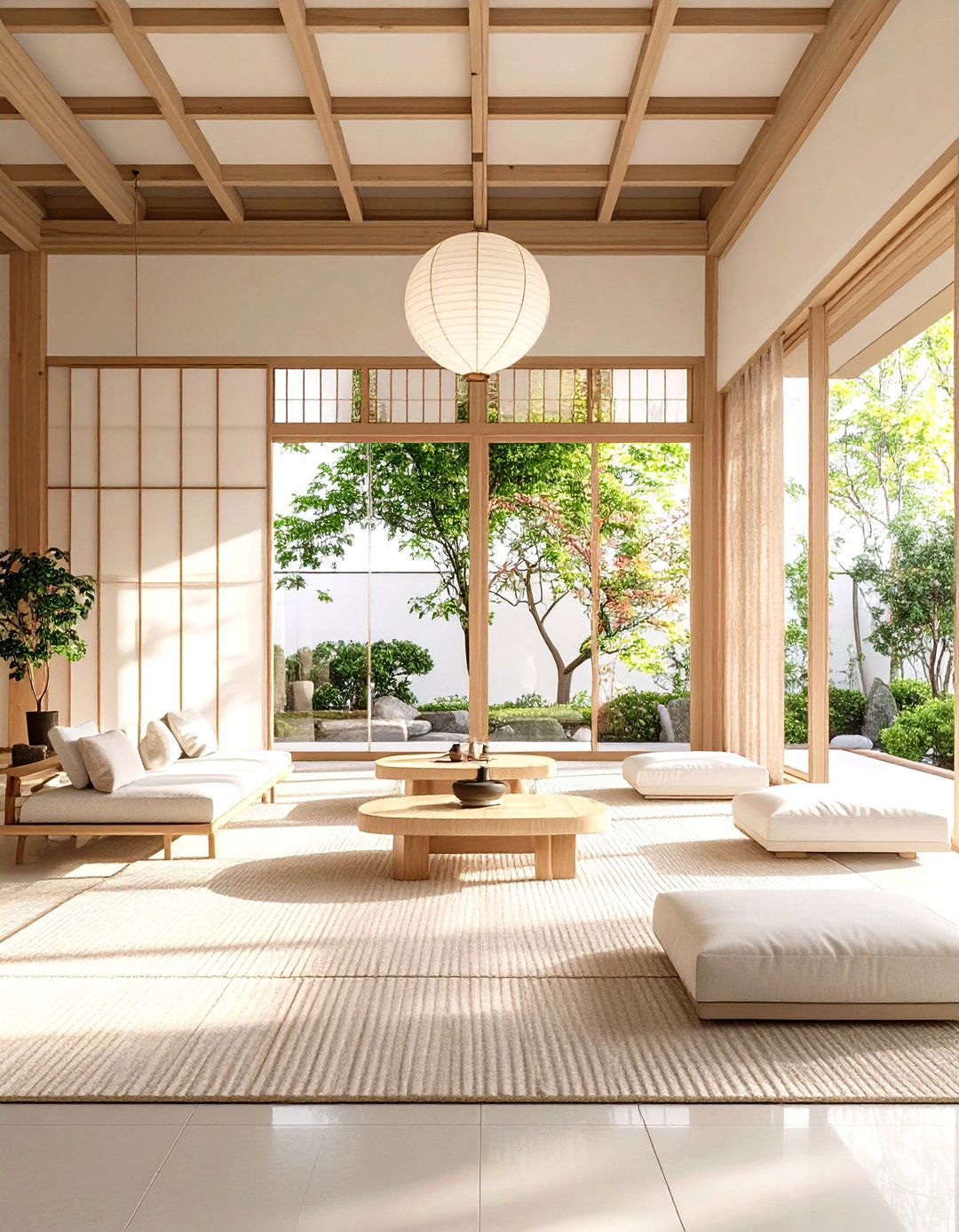
Curating a mindful wall art display in your zen room requires selecting pieces that inspire contemplation while maintaining visual simplicity and emotional resonance. Choose artwork depicting nature scenes, abstract minimalist designs, or traditional Japanese calligraphy that encourages peaceful reflection without overwhelming the senses. Limit wall decorations to one or two carefully chosen pieces per wall, allowing each artwork to breathe and command attention individually. Frame pieces in natural materials like bamboo or simple wood that complement rather than distract from the artwork itself. Include inspirational quotes or poetry written in beautiful calligraphy that serves as daily reminders of zen principles and mindful living. Position artwork at eye level for seated meditation to ensure accessibility during contemplative practices while maintaining the room's clean, uncluttered aesthetic.
19. Zen Room with Natural Bamboo Flooring

Installing natural bamboo flooring in your zen room creates a sustainable, beautiful foundation that connects your space directly with nature while providing practical benefits. Bamboo naturally regulates humidity and temperature while offering antimicrobial properties that support healthy indoor air quality. Choose unfinished or lightly treated bamboo that retains its natural color variations and grain patterns, avoiding heavily processed options that can off-gas chemicals. The smooth surface feels pleasant when walking barefoot, encouraging the traditional zen practice of connecting directly with natural materials through touch. Include area rugs made from natural fibers in designated seating or sleeping areas to add warmth and comfort without covering the beautiful bamboo completely. This flooring choice embodies sustainability principles central to zen philosophy while creating a timeless aesthetic that ages gracefully.
20. Zen Room with Integrated Sound Therapy Space
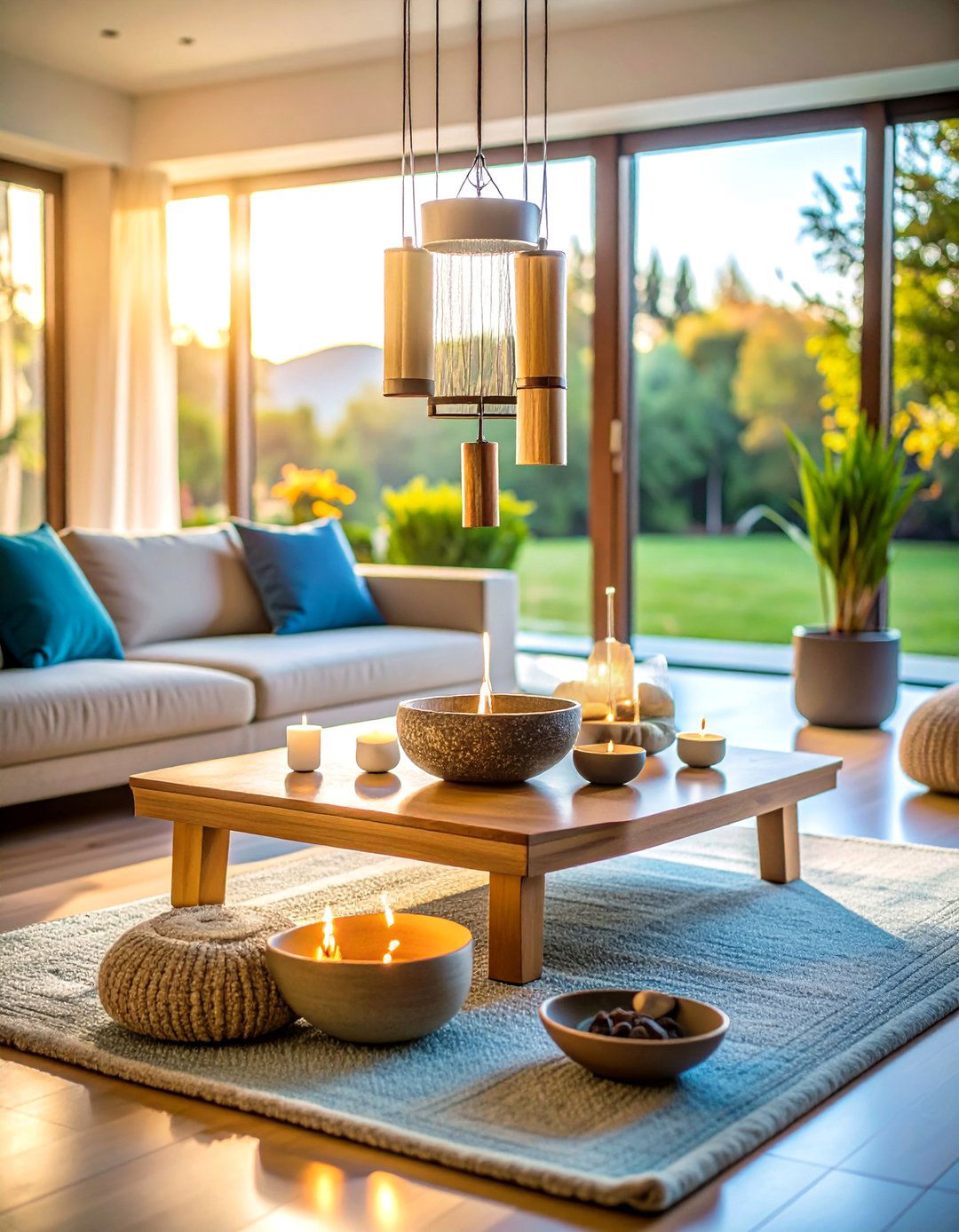
Designing an integrated sound therapy space within your zen room enhances meditation and relaxation through carefully chosen acoustic elements that promote deep inner peace. Include singing bowls, chimes, or gentle bells positioned where they can be easily accessed during meditation or relaxation practices. Install small speakers designed to play nature sounds like flowing water, gentle rain, or soft wind that mask external noise without becoming distracting. Choose sound elements that can be adjusted or turned off completely when silence is preferred for deep contemplation. Position acoustic materials like bamboo panels or natural fiber wall hangings that improve sound quality while maintaining your room's aesthetic integrity. This multisensory approach recognizes sound as a powerful tool for transformation while keeping the technology subtle and unobtrusive within your peaceful sanctuary environment.
Conclusion:
These twenty zen room ideas provide practical pathways to create your own tranquil sanctuary that supports mental well-being and mindful living. By incorporating natural materials, minimalist design principles, and thoughtful organization, any space can become a peaceful retreat from daily stress. Remember that authentic zen design emphasizes quality over quantity, encouraging you to choose fewer, more meaningful elements rather than filling your room with decorative items. Start with one or two concepts that resonate most deeply with your lifestyle and gradually expand your zen room as you discover what brings you the greatest sense of peace and balance.


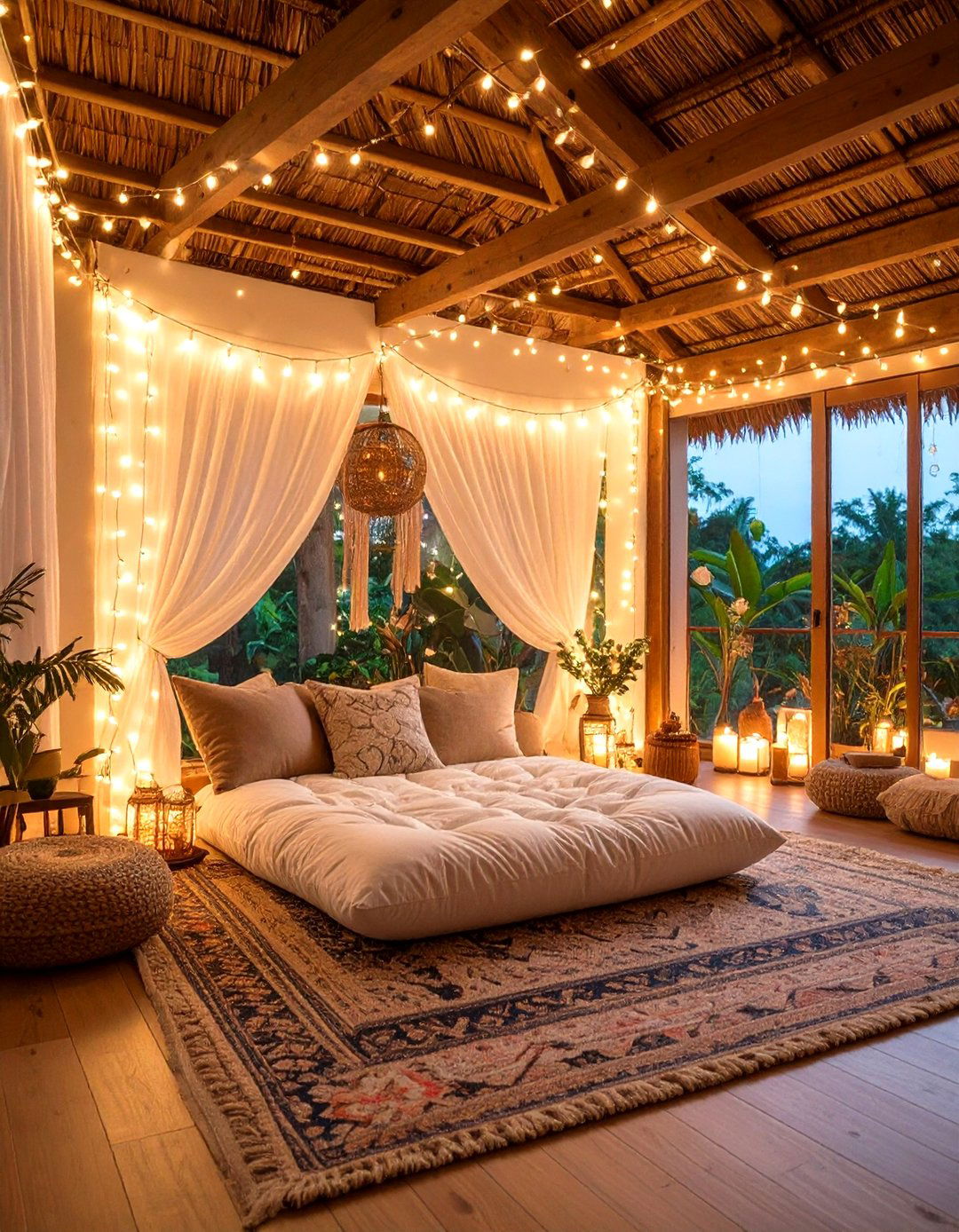
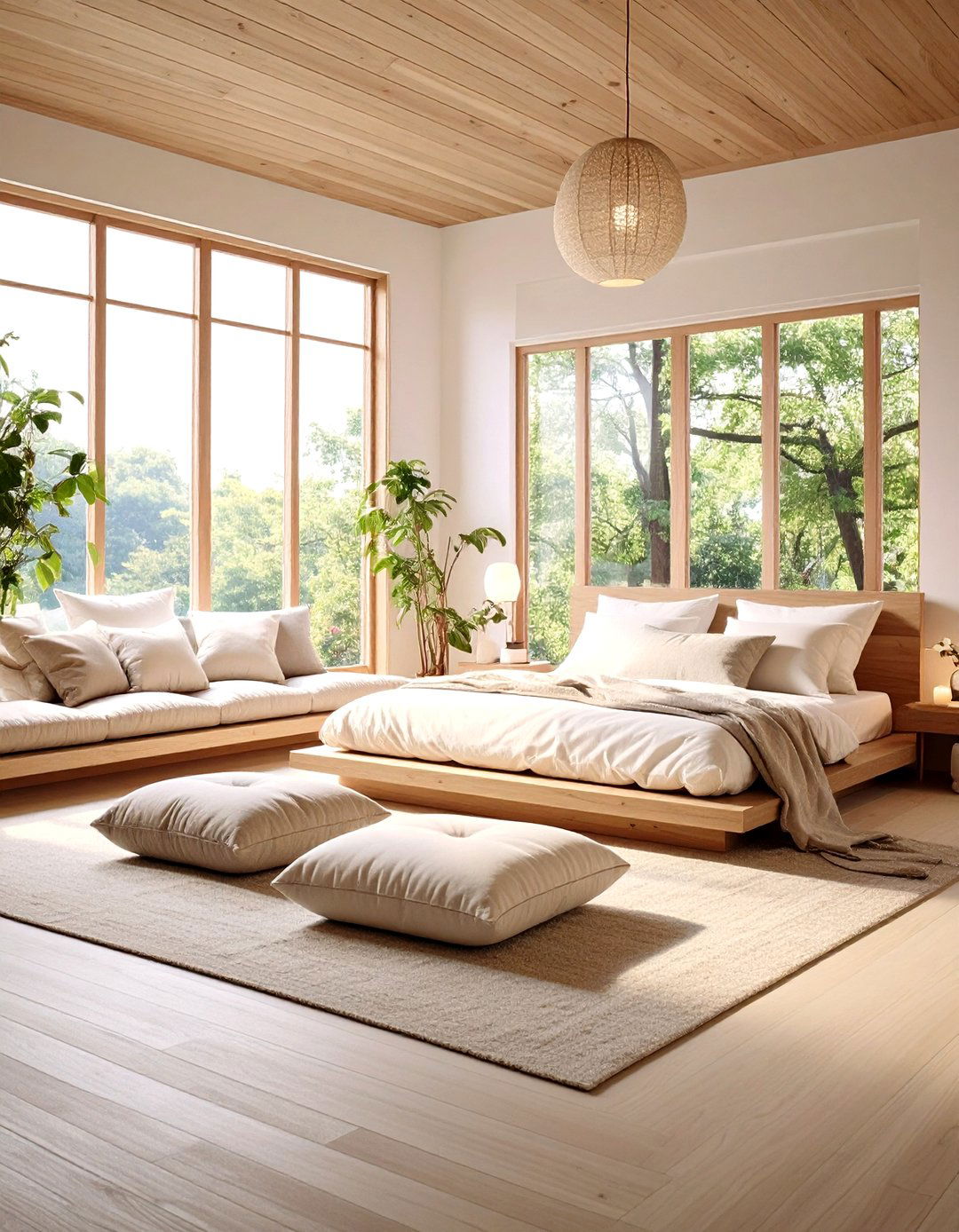



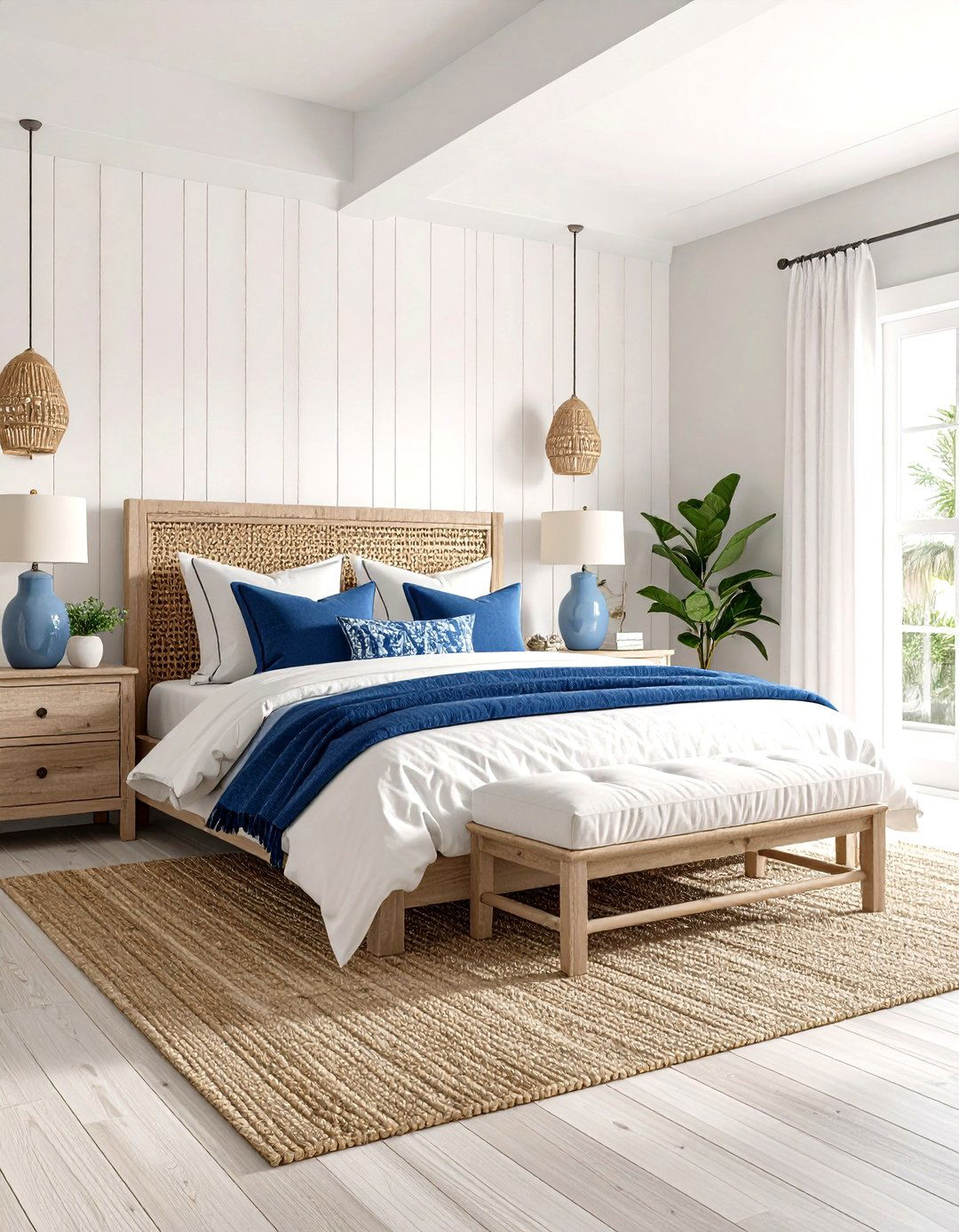

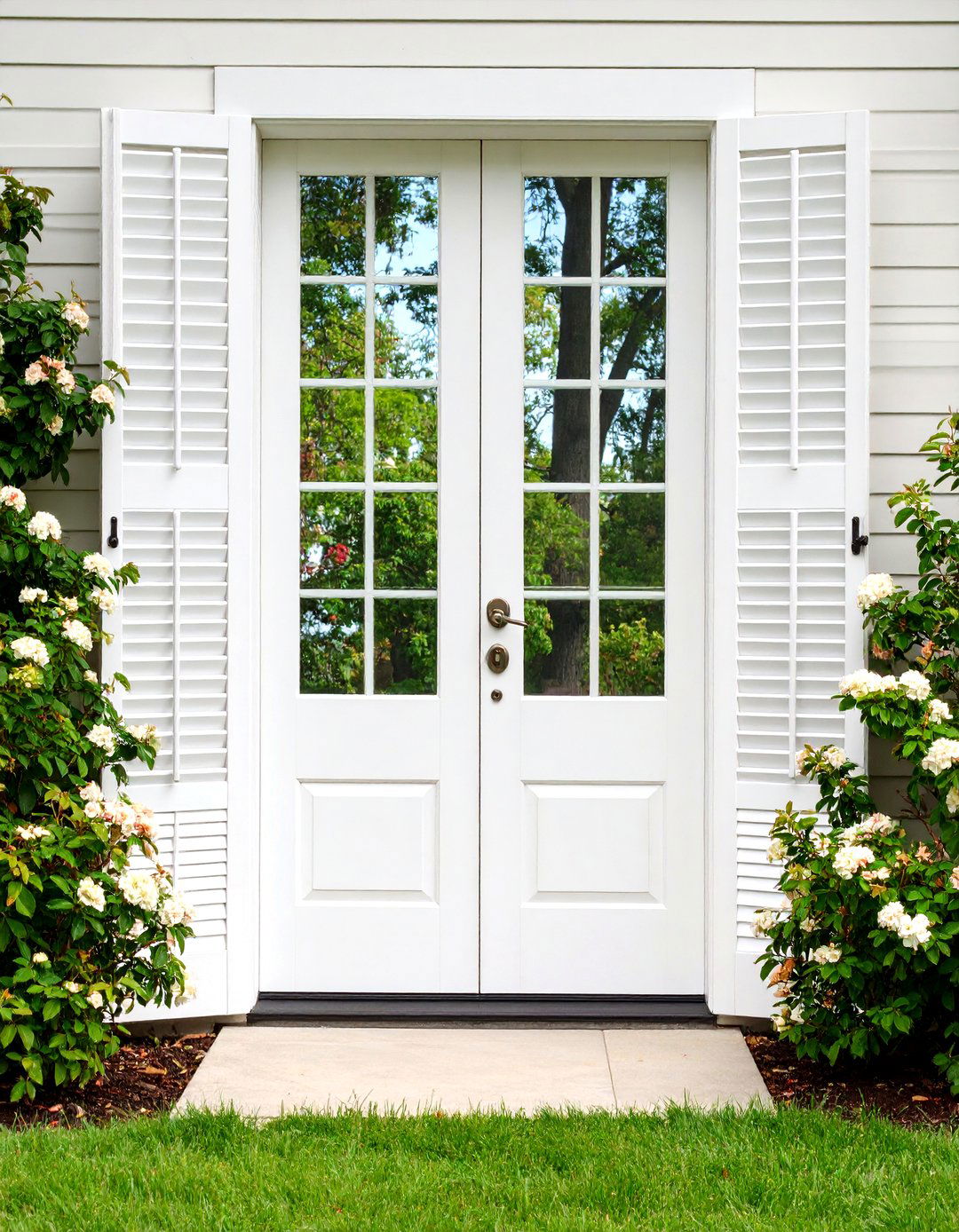
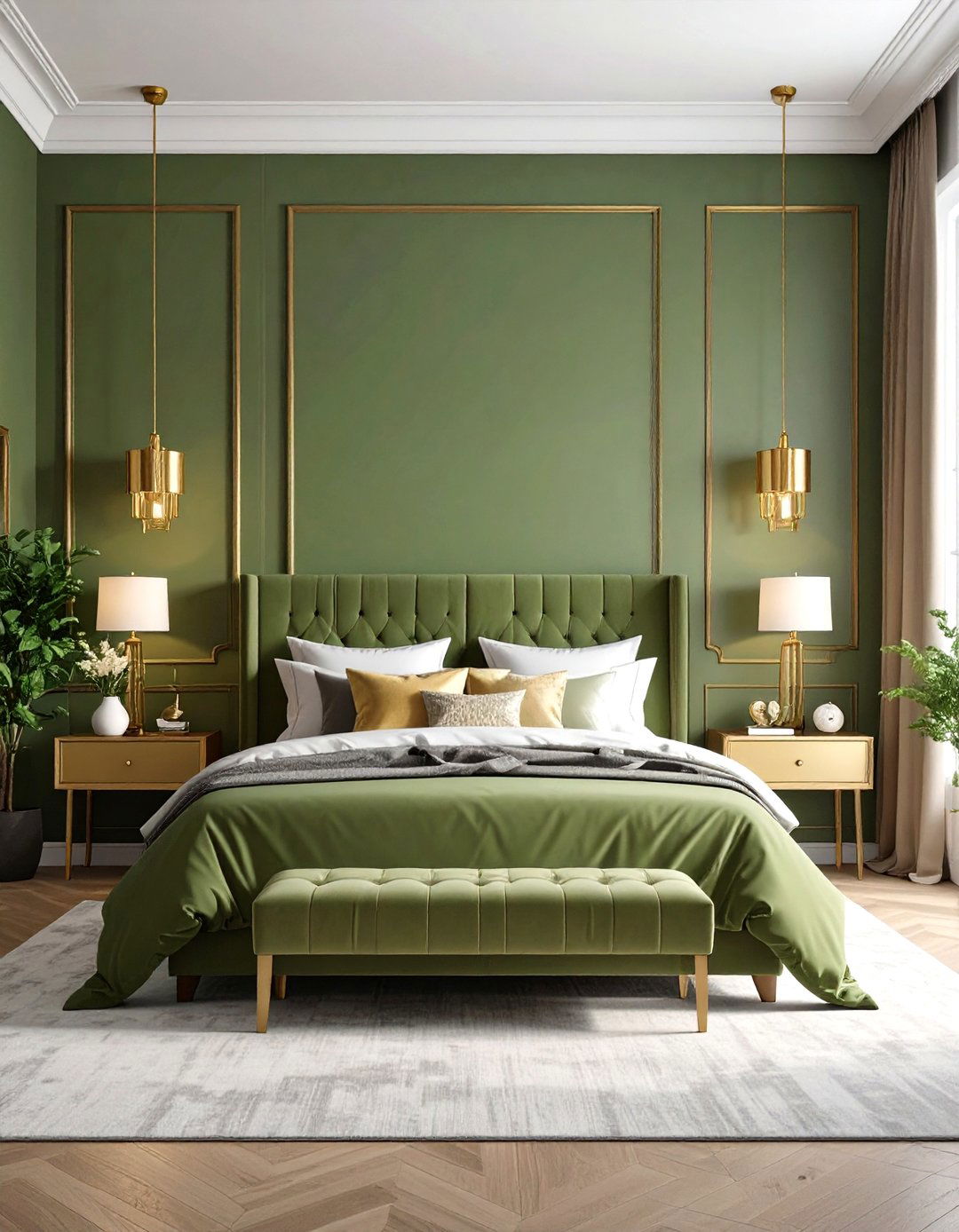
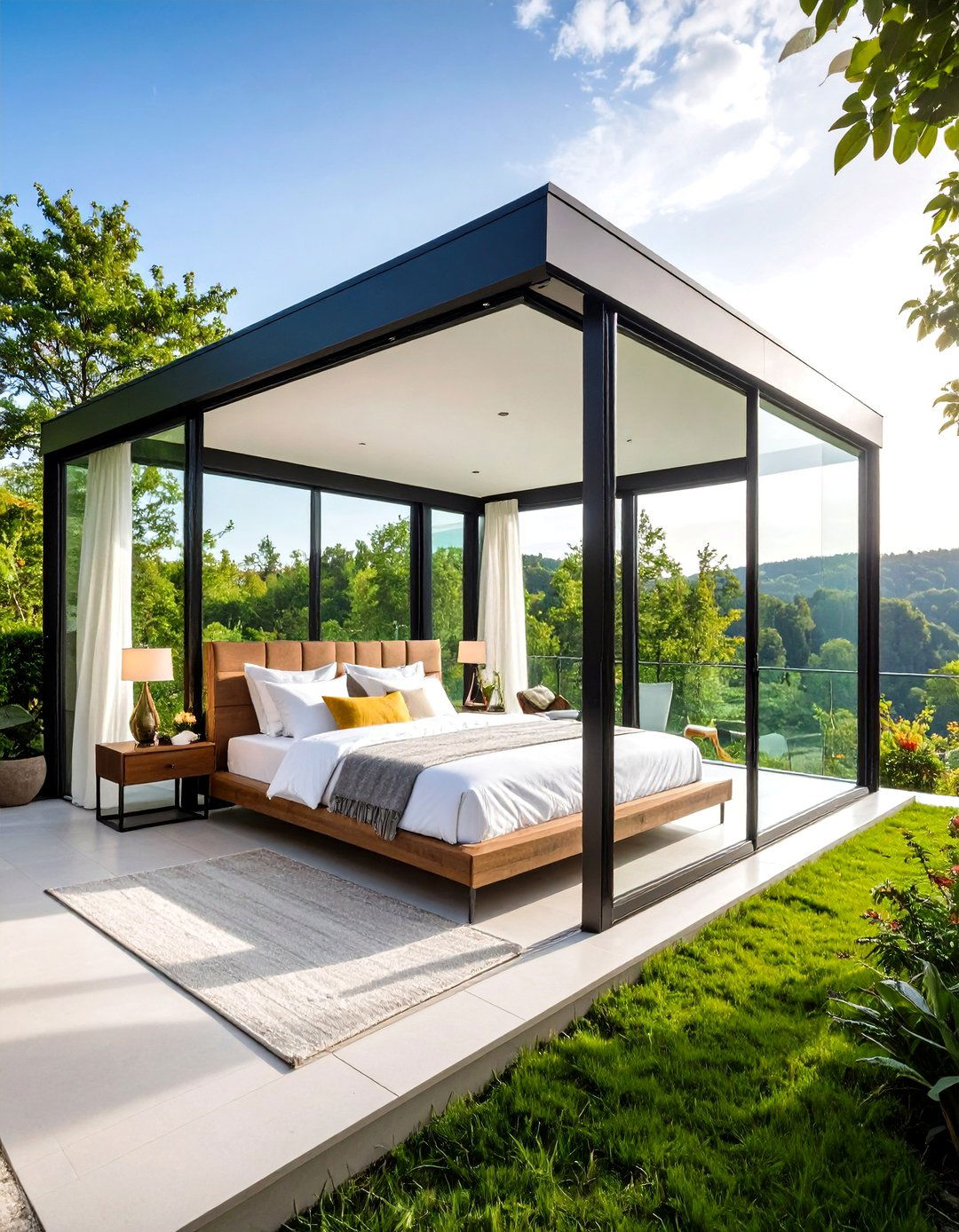
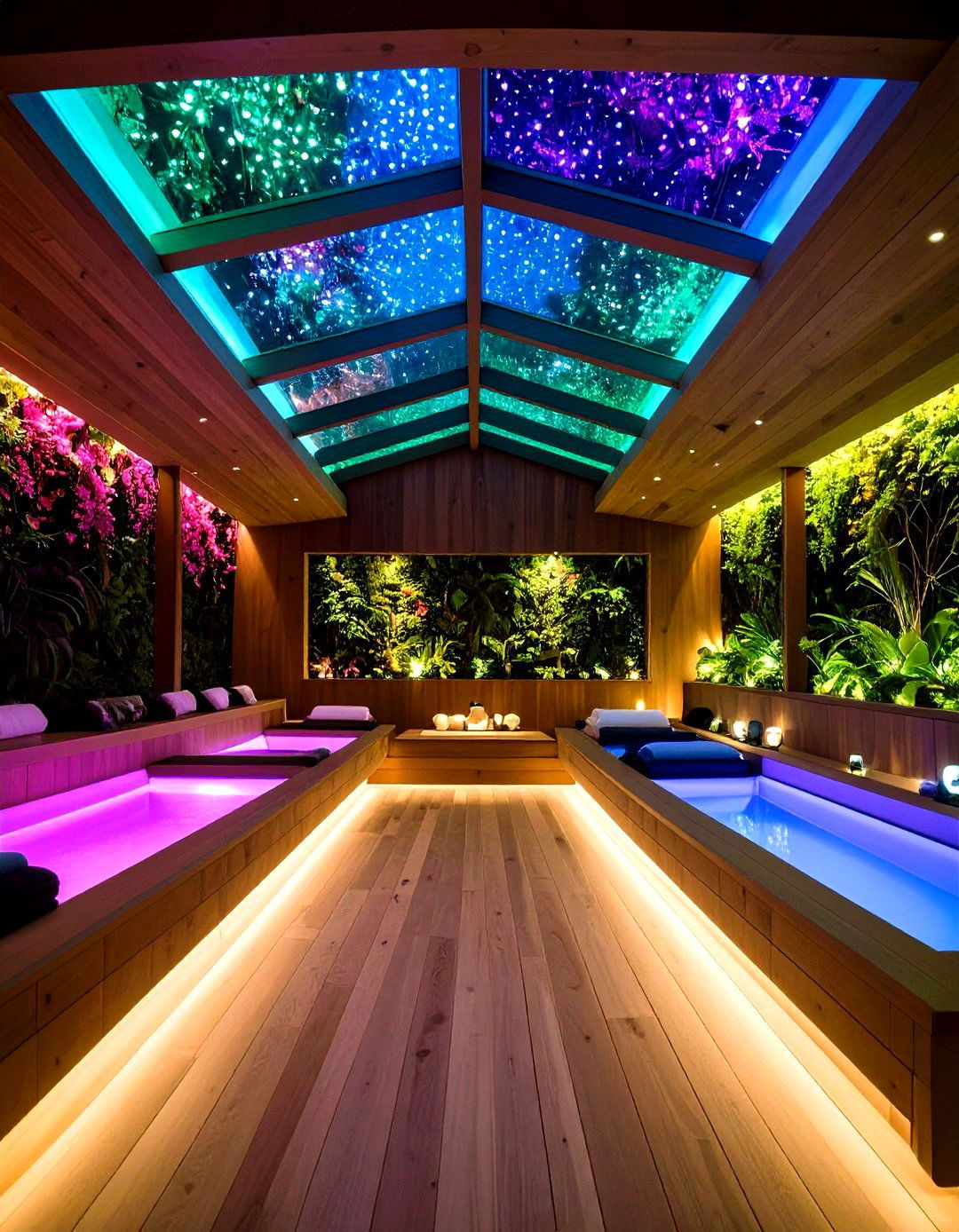

Leave a Reply